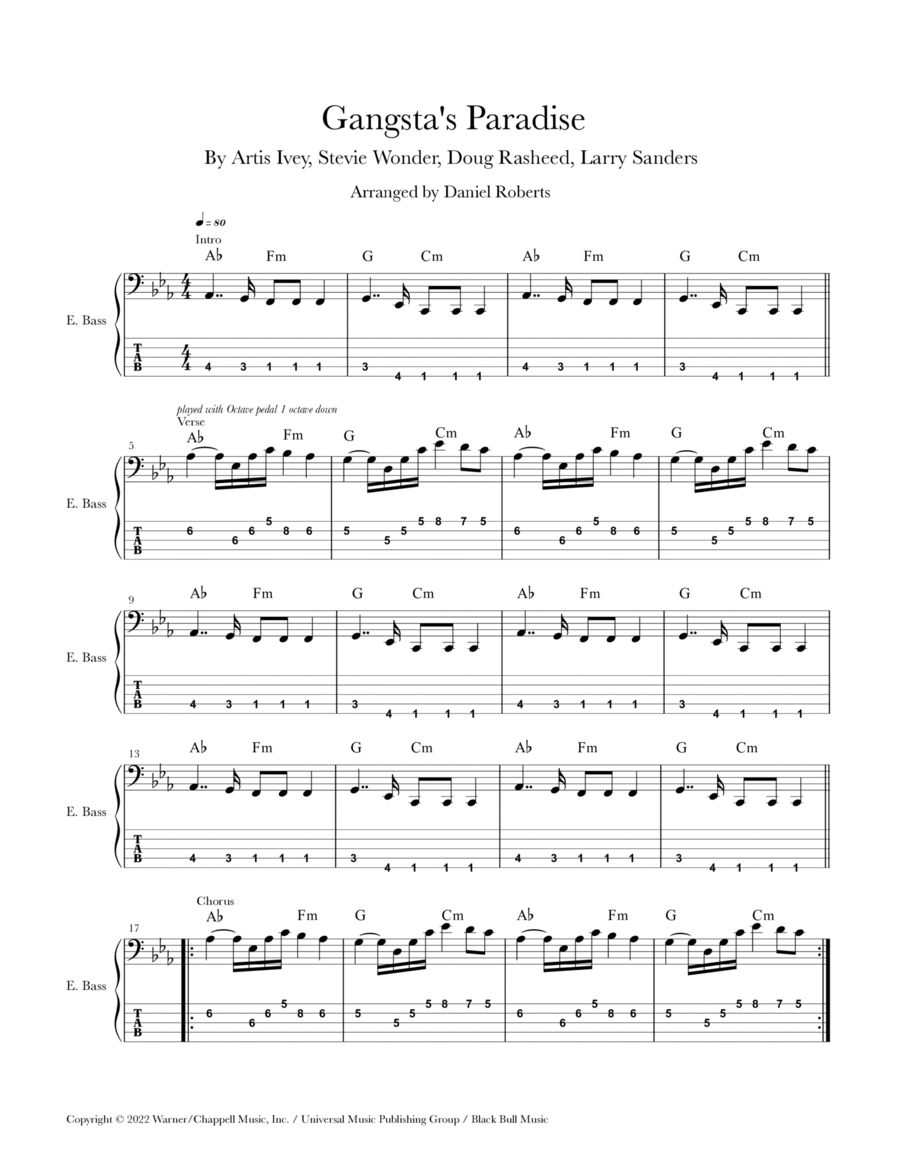Bass Guitar - Level 3 - Digital Download SKU: A0.1113598 By Coolio Featuring L.V. By Artis Ivey, Doug Rasheed, Larry Sanders, and Stevie Wonder. Arranged by Daniel Roberts. 20th Century,Film/TV,Hip-Hop,Instructional,R & B. Score. 2 pages. Daniel P Roberts #715501. Published by Daniel P Roberts (A0.1113598). Bass line of Synth Bass arranged for 5-string Bass with TAB. Use octave pedal. As I walk through the valley of the shadow of death I take a look at my life and realize there's not much left 'Cause I've been blastin' and laughin' so long, that Even my mama thinks that my mind is gone But I ain't never crossed a man that didn't deserve it Me be treated like a punk, you know that's unheard of You better watch how you're talkin', and where you're walkin' Or you and your homies might be lined in chalk I really hate to trip but I gotta loc As they croak, I see myself in the pistol smoke, fool I'm the kinda G the little homies wanna be like On my knees in the night, sayin' prayers in the streetlight Been spendin' most their lives, livin' in the gangsta's paradise Been spendin' most their lives, livin' in the gangsta's paradise Keep spendin' most our lives, livin' in the gangsta's paradise Keep spendin' most our lives, livin' in the gangsta's paradise Look at the situation they got me facin' I can't live a normal life, I was raised by the street So I gotta be down with the hood team Too much television watchin' got me chasin' dreams I'm an educated fool with money on my mind Got my ten in my hand and a gleam in my eye I'm a loc'd out gangsta set trippin' banger And my homies is down so don't arouse my anger, fool Death ain't nothin' but a heartbeat away I'm livin' life, do or die, what can I say I'm 23 now, but will I live to see 24? The way things is going, I don't know Tell me why are we, so blind to see That the ones we hurt, are you and me? Been spendin' most their lives, livin' in the gangsta's paradise Been spendin' most their lives, livin' in the gangsta's paradise Keep spendin' most our lives, livin' in the gangsta's paradise Keep spendin' most our lives, livin' in the gangsta's paradise Power and the money, money and the power Minute after minute, hour after hour Everybody's runnin', but half of them ain't lookin' It's goin' on in the kitchen, but I don't know what's cookin' They say I gotta learn, but nobody's here to teach me If they can't understand it, how can they reach me I guess they can't, I guess they won't I guess they front, that's why I know my life is out of luck, fool Been spendin' most their lives, livin' in the gangsta's paradise Been spendin' most their lives, livin' in the gangsta's paradise Keep spendin' most our lives, livin' in the gangsta's paradise Keep spendin' most our lives, livin' in the gangsta's paradise Tell me why are we, so blind to see That the ones we hurt, are you and me? Tell me why are we, so blind to see That the ones we hurt, are you and me?
